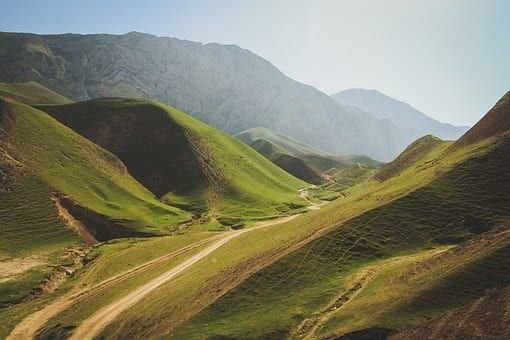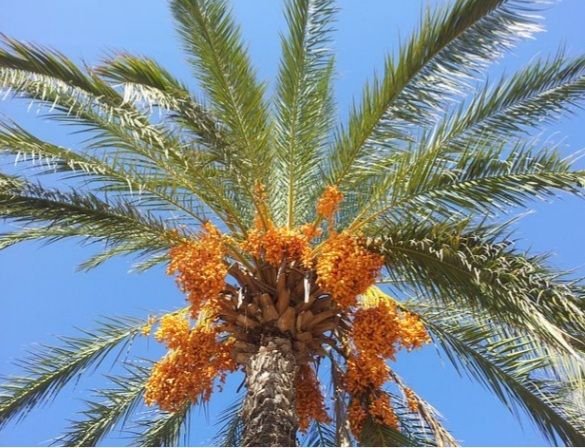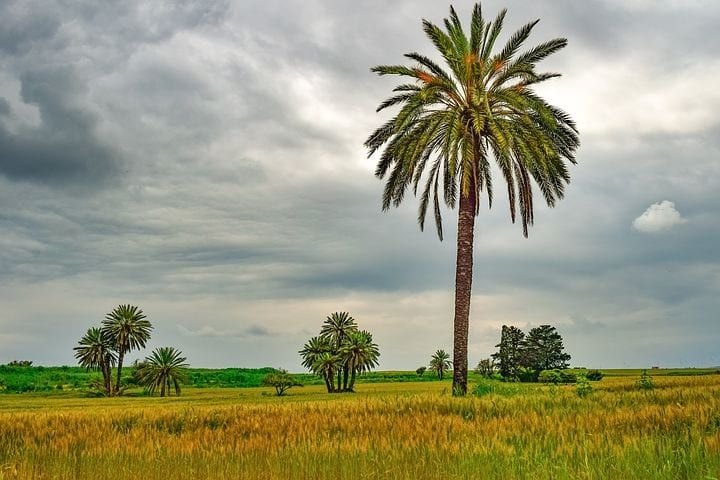In The Name of Allah, The Most Merciful, The Bestower of Mercy.
What prompted us to start this series was an incredible and repugnant nonsense uttered by a French ideologue who says that Africa should show gratitude to France! Gratitude for what exactly? For 147 years of plundering, violence, oppression, exploitation, cruelty, theft, and arrogance? This is why none deserves Imam As-Sadi’s, may Allah have mercy on him, rebuke against the oppressors more than the French Colonialists. He said: “What kind of progress is this? A progress that turns its people into vicious wild animals, marked by oppression, annihilation, and the colonisation of weaker nations while stripping them of their rights?” He also noted that their so-called development is disconnected from submission to Allah and the religion He ordained, leading to harm and resulting in savagery and barbarism, with outcomes that bring about destruction, ruin, and unparalleled evils. [1]
The Mali Empire Prior to The Arrival of The French Colonialists
At its zenith, the Mali Empire encompassed the territory spanning from the Sahara Desert to the coastal forests, incorporating present-day Senegal, southern Mauritania, Mali, northern Burkina Faso, western Niger, the Gambia, Guinea-Bissau, Guinea, the Ivory Coast, and northern Ghana. This Kingdom has been extensively examined in historical research, leading to a variety of discussions and interpretations among Arab historians who contributed their insights and perspectives. Notably, the geographical attributes of the Kingdom of Mali, including its location and demographic characteristics, have attracted considerable interest from Arab Muslim travelers and geographers in their accounts. The kingdom was acknowledged by certain Arab communities, especially in Egypt, as the territory of Takrur. However, it is important to note that this term specifically pertains to a distinct area within the Sultanate of Mali, as indicated by the title of the rulers of Mali, who were referred to as the kings of Takrur.
The various tribes within the population of Mali exhibited considerable diversity, shaped by the languages and dialects of adjacent groups. The Fulani refer to these tribes as “Mali,” while the Berber language identifies them as “Milet,” and in Arabic, they are known as “Millal.” In the Hausa language, they are called “N’kudi.” As for the precise etymology of the term “Mandé”, it is ambiguous; some theories propose that it originates from “Mandi,” which translates to “the city” or “the capital,” suggesting that these individuals are the inhabitants of urban areas. In the Mandé language, “Mali” is interpreted as “where the king resides.”
Arab geographers and travelers, along with their successors, did not offer a detailed description of the boundaries of the Mali Kingdom. Nevertheless, its borders were situated within the regions south of the Sahara, which were commonly referred to by these geographers and travelers as the lands of Sudan. This area is vast and varied, extending northward to the territories of the Berbers, southward to the plains, eastward to Abyssinia, and bordered by the ocean to the west. The region is categorized into three segments: Eastern Sudan, Central Sudan, and Western Sudan. The Mali Kingdom is located in Western Sudan, spanning approximately three hundred miles along one of the Niger River’s branches, adjacent to the former kingdom to the north.
The kingdom underwent considerable territorial growth over the centuries. Its boundaries stretched from the Atlantic Ocean in the west to the Borno area, currently part of Nigeria, in the east, and from the northernmost reaches of Morocco in the south to the ocean in the southern regions. At the zenith of its influence, the kingdom included areas that are now recognized as Senegal, Gambia, Mauritania, and the modern Republic of Mali. The kingdom was divided into five distinct regions, each governed by the Mansa or Sultan of Mali, whose central authority was located in Benbi or Bemba. To the west of Mali lay the Sosso region, specifically in Kanyaga. The Ghana region was situated to the west of Sosso, reaching the shores of the Atlantic Ocean and containing gold mines that attracted traders from Silhamasa and northern Morocco. The Kokiya region was positioned to the east of Mali, with its center in Kokiya, approximately a month and a half’s journey from Ghana, west of present-day Nigeria. Adjacent to Kokiya was the Takrur region, which had its base established in Takrur.
The introduction of Islam to the Kingdom of Mali occurred prior to the arrival of the Almoravids in West Africa, largely due to the longstanding trade relations between the northern and western regions of the continent. Given that West Africa is largely a cohesive region, it is essential to recognise that trade, despite facing various obstacles, played a significant role in the exchange of new and productive discourses. So, who was the first among the kings of Mali to embrace Islam? Some historians assert that once the land of Mali experienced a severe drought in a particular year, threatening the crops and livestock. In response, the king sought the counsel of a respected Muslim elder known for his piety. The elder prayed with the king for rain, which subsequently fell, but only after the scholar had first urged the king to convert to Islam. The king acepted Islam, dismantled the idols, which subsequently led to the conversion of his heirs and close companions, while the majority of his subjects continued to practice polytheism, resulting in a bifurcation of governance between Muslims and non-Muslims from that time forward. Furthermore, it has been reported that the region of Mali once endured successive years of drought, prompting the populace to make cattle sacrifices in their desperate appeals for rain, nearly exhausting their livestock without any alleviation of their plight. During this period, a Muslim visitor, who was engaged in reciting the Quran and imparting teachings of the Sunnah, was present at the royal court. The king conveyed his worries to this guest, who counseled him that by believing in Allah, recognizing His oneness, accepting Muhammad, peace and blessings of Allah be upon him, as His messenger, and adhering to the principles of Islam, he might find hope for relief. Islam was already known to the king when he chose to adopt it. There existed Muslims who engaged in the recitation of the Quran, imparted the teachings of the Prophet, and diligently disseminated the Islamic message. In many instances, the growth of Islam was characterised not by coercion but by persuasion, a hallmark of its appeal as a faith that resonates with sound human nature. Additionally, the Mandinka, the architects of the Mali Empire, emerged as some of the most fervent advocates of Islam in West Africa.
The rulers of Mali by the close of the eleventh century had accepted Islam, and the expansion of the Mali Empire throughout different areas of West Africa was intricately linked to the dissemination of Islam and the formation of its institutions, such as mosques and educational establishments. Furthermore, there was a deliberate initiative to attract scholars and religious figures to Mali in order to further the Islamic mission and enhance educational opportunities. Muslim scholars held a significant position in Mali, as the Kingdom of Mali not only embraced Islam and endeavored to implement its teachings and sciences but also actively promoted it among the inhabitants of West Africa. The role it played in the dissemination of Islam is considered one of the most crucial phases in the spread of Islam across the continent, as it was closely linked to the call for the faith.
The primary guideline for succession to the throne in Mali involved the selection of the eldest son of the deceased sultan. Nevertheless, adherence to a strictly linear order of descent was not obligatory. It was permissible for brothers to succeed each other, provided that the age hierarchy was maintained, even if they were not the eldest. Additionally, it was not uncommon for the sons of sisters or daughters to inherit the throne, a practice that was prevalent in various African kingdoms throughout West Africa and in the Nile Valley among the Nubian populations. This principle was observable in the Ghana Empire and was similarly practiced in the smaller Sudanese kingdoms, irrespective of whether they were governed by indigenous Sudanese or Berber leaders. Al-Qalqashandi remarked on this tradition, noting, “According to the custom of the non-Arabs regarding the inheritance by daughters and granddaughters.” Ibn Battuta further elaborated on this custom, recounting his observations in the city of Takda, where the sons of the sultan’s sister held power, as well as in the city of Walata. At times, the reins of power may slip from their grasp, leading to the throne being usurped by an individual outside the ruling families, as occurred with Al-Sundaki following the death of Musa II.
The rulers of the Mali Empire wielded absolute power over the empire’s governance. Their duties encompassed ensuring the security and justice of their subjects, as well as convening regular consultations in the palace courtyard to evaluate the welfare of the populace and to enforce their decrees. The vice-king, referred to as “Fanja,” played a crucial role in the administration, supported by ministers, senior officials, and advisors. It was common for the vice-king to be the king’s son. Ministers, known as “Sundaki,” often included individuals who had previously been enslaved by the sultans but had since gained their freedom. In terms of administrative organization, the term “dojo” denoted a village, which constituted the fundamental unit of governance. Cities, formed from multiple villages, were called “Diyamana,” signifying provinces or kingdoms. This administrative framework appears to have been shaped by the tribal traditions of the Mandinka, the original founders of the Islamic Kingdom of Mali. The designation “Mansa” was also employed and associated with the provincial governors and village leaders. Typically, the individual responsible for overseeing provincial matters arrives in the village shortly after the chief and may exercise authority on his behalf.
The Kingdom of Mali established various institutions to manage its governance, with the judicial system holding a position of utmost significance, recognized as both a noble and demanding responsibility under the Sultan’s oversight. The empire maintained a powerful military, with the army constituting the second most crucial labor force in the region. This emphasis on military prowess can be traced back to the time of Sundiata, who achieved a significant victory over rival tribes during the Battle of Kabriya.
The military force of the Mali Empire reached its zenith during the rule of Mansa Musa, establishing itself as the most powerful military entity in West Sudan. Several Malian monarchs granted territories to military nobles, generously endowing them with nearly fifty thousand mithqals of gold each year, alongside provisions of horses and textiles for their uniforms and urban development. The primary responsibilities of the army included protecting the nation from external aggressions and ensuring internal stability. Military leaders enjoyed a high status within the political hierarchy, and the army was organized into two distinct divisions, each overseen by a commander appointed by the king. The Northern Army, commanded by Farhan Sur, was stationed in the city of Diara in the Kanbaja region. Conversely, the Southern Army was headquartered in the Sangaran region, led by Diyon Sandaki. The armament of the Malian military comprised spears, swords, staffs, crossbows, lances, and pins crafted from the Inos tree, complemented by shields made from the hide of the Lamta animal, which possessed the durability to endure spear thrusts, sword blows, and crossbow projectiles.
The economic life and the foundations of its economy included agriculture, industry, and trade. Agricultural methods and irrigation techniques: Agriculture served as a fundamental pillar of the Kingdom’s economy; however, it did not receive significant attention due to the populace’s inclination towards trade. Consequently, there was a lack of innovation in agricultural practices and irrigation methods, coupled with a deficiency in agricultural tools. As a result, agriculture did not experience widespread development, particularly in trade-centric regions, and there was no substantial class of farmers, except for a few individuals tied to the land. Agriculture flourished more in cities located along riverbanks than in inland areas, primarily due to the former’s fertile lands. For instance, the Gambia River benefited from heavy rainfall throughout its course, resulting in the deposition of rich alluvial soil along its banks. The tools traditionally employed by farmers were characterised by their simplicity, including a small-handled hoe, a spade, and a knife, alongside the practice of fallow farming.
Regarding irrigation methods, initially, irrigation was achieved through artificial means, particularly evident in desert oases and along the banks of the Niger and Senegal rivers. In addition to relying on rainfall alongside watercourses during the rainy season, they were keen on cultivating areas located along riverbanks. However, due to the influx of resources into the kingdom, the land was utilized more effectively, leading to the expansion of agriculture in mountainous and interior regions. This development prompted them to enhance irrigation techniques, resulting in the emergence of various agricultural patterns based on regional characteristics. For instance, rain-fed agriculture was prevalent in lowland areas, while permanent farming using hoes and spades was practiced in forested regions. As they expanded their agricultural activities into the interior areas, they resorted to drilling wells for irrigation. Some of these wells are of the artesian type, which involved digging until reaching solid rock, which was then broken with picks and axes to release water.
The most significant agricultural products in the region were vegetables, with the kingdom being renowned for cultivating a variety of them, including okra, onions, garlic, eggplants, and cabbage. Additionally, wild molokhia was present, along with a plant known as qafi, which resembles taro and is used to make porridge. The stems of this plant were also utilised to create dishes and utensils for eating, and it played a role in their daily meals. In terms of fruits, their availability was limited, with fig trees being among the most prominent cultivated fruits, alongside trees that bear fruits resembling cucumbers. The influence of Arab Islamic presence was notably evident in the agricultural sector, particularly concerning crops. This was illustrated by the introduction of new agricultural products to the kingdom from Arab Islamic countries. Historical accounts suggest that cotton seeds were brought to West Sudan from North Africa, and it is attributed to the Muslim king Sandiana (Mari Hatta) the introduction of cotton cultivation in the kingdom, as he promoted agricultural policies within the region. In addition to agricultural wealth, the kingdom also possessed a significant livestock resource, comprising both domesticated and wild animals. The domesticated animals, which were raised in households, included sheep, goats, cattle, and camels. The inhabitants utilised their meat for sustenance and crafted clothing from their wool and hair. However, their sheep and goats often lacked proper grazing areas, as they primarily foraged in refuse sites. Notably, a single goat could give birth to seven or eight offspring at a time.
Wild animals include deer, lions, tigers, giraffes, zebras, and buffalo. Evidence of the presence of giraffes in the kingdom was demonstrated by their being sent as a gift from Sultan Mansa Zata to Sultan Abu Salim al-Barini. Additionally, giraffes were abundant in the land of Takrur, where they were frequently captured and slaughtered like cattle. The kingdom was known for its horses, particularly the Akadian breed, and its livestock included cattle, sheep, and camels. Among these animals, there were some of poor physique and small stature. The kingdom lacked purebred horses, which they imported from North Africa. These horses were primarily used by the king’s entourage during their movements within the city, as well as by merchants on their various journeys. The prices of these horses were quite high, making them accessible only to the wealthy class. Additionally, camels were considered one of the most significant livestock due to their remarkable ability to endure the hardships of travel and withstand salty water. They played a crucial role in the dissemination of education and Islamic beliefs to the regions of Sudan. Furthermore, buffaloes were prevalent in the deserts, where they were hunted similarly to wild game. The hunters would capture the young from their mothers and raise them at home. When they intended to hunt buffaloes, they would take one of them to the hunting area, allowing the others to see and become familiar with it.
The forests were home to a vast number of elephants, whose tusks were utilised in the ivory trade. These elephants were characterised by their wild nature, being untamed. The method of capturing them involved men laying out a type of paper, along with bait and branches, near a water source. They would then hide, and once the elephants approached to drink, they would become intoxicated and fall. Subsequently, the hunters would emerge with large spears to kill the elephants, with the primary objective being to obtain their tusks. They were were hunted in the neighboring lands of the non-Muslims.
In the industrial sector, the Kingdom of Mali was endowed with significant mineral wealth, which served as a cornerstone for its economy, primarily comprising gold, salt, and copper. Gold held the foremost position among these raw materials, followed by salt and copper. Salt, in particular, was valued just after gold and was concentrated in several regions, with Taghaza being the most renowned for its production or south of Morocco, near the Atlantic Ocean, thus designating Taghaza as a populated area rich in salt mines resembling marble quarries. The salt extracted from this region was transported both within and beyond West Sudan and was regarded as one of the finest types of salt. In addition to the well-known saltworks of Taghaza, there were also the saltworks of Krenouga. The extraction of salt involved digging tunnels in the ground to a depth of approximately two cubits or less, where it was cut similarly to stone. The salt came in various colours, including white, gray, and red. Copper ranked in importance just after gold and salt, due to its critical demand in military industries, adornments, and the manufacturing of utensils. This metal was mined from Takkanda through a process of excavation. Consequently, copper played a significant role alongside the aforementioned minerals, and the region was also known for other mineral resources. Iron is another significant metal, with its mines widely distributed in western Sudan. In addition to this, there were other raw materials such as lead, kohl, and tin; however, these materials were not as prevalent. Similarly, alum and kohl were considered primary materials, with alum being one of the essential components in dye production. The Islamic Kingdom of Mali was known for its industrial system. In the villages, there were numerous artisans and craftsmen, particularly in the city of Timbuktu, which housed many workshops. Among the most important crafts that flourished in the Kingdom of Mali were: Carpentry, which thrived significantly due to the availability of abatis wood, as well as pottery and ceramics. This craft was one of the most common in the kingdom, with residents focusing on pottery making, creating household items such as containers for milk. Additionally, leatherworking was practiced by a group known as the cobblers. Blacksmithing also received considerable attention in the kingdom, along with mining, which was one of the most vital crafts due to the importance of metals in the country’s economy.
The commercial centers in Mali experienced significant growth, which characterised the kingdom and led to the emergence of numerous trading cities located on both sides of the Sahara Desert. This was particularly evident in areas traversed by caravans crossing the desert, which served as stable hubs for merchants responsible for transporting and distributing various goods. Among the most notable centers are Ghadames, a city in the Maghreb region adjacent to Sudan, and Tawat, situated in the southwestern part of the Algerian desert, which is part of the larger African Sahara. Another important center was Argelan, located in the central Moroccan desert, described as a city inhabited by the Miassir tribes and wealthy traders who would travel to the lands of Ghana and Wankara. On the southern side of the Sahara, there was Walata, recognised as the last city of the ancient region of Shinqit (modern-day Mauritania), founded in the first century of the Hijra. Its inhabitants were of Arab descent. This city, as well as Timbuktu, which was considered one of the most significant commercial centers in the Islamic Kingdom of Mali. The name Timbuktu is believed to originate from an elderly woman, as caravans of the Tuareg would stop to drink from a well in the desert. A woman named (Boktu) resided by this well, and her name has remained unchanged over time. This location is situated at the southern edges of the Sahara Desert in northern Mali, near the bend of the Niger River. Java is recognized as a significant commercial center due to its position on the left bank of the Niger River, connected to the Tamas Valley that descends from the heart of the desert. Mademke is also considered an important trading hub, attracting merchants from both the East and the West. This influx is attributed to the stability and security that characterised the area, which experienced an improvement in its economic conditions, evolved into one of the most vital commercial markets until the late 10th century AH, corresponding to the 16th century. [2]
To be continued InShaAllah.
[1] Excerpt from Al-Adillah al-Qawaatiq Wal-Baraaheen Fee Ib’taal Usool al-Mul’hideen 44]
[2] Excerpt from the Arabic source: “The Kingdom of Mali During The Reign of Mansa Musa” pages 1-30









